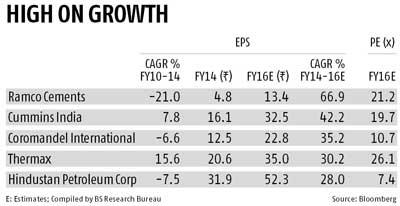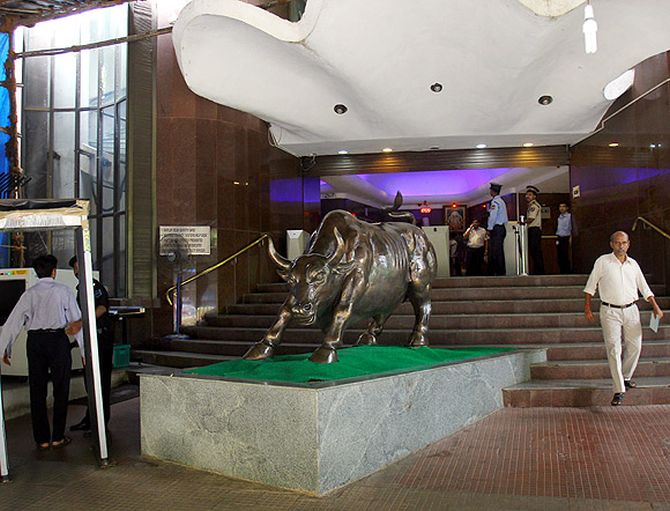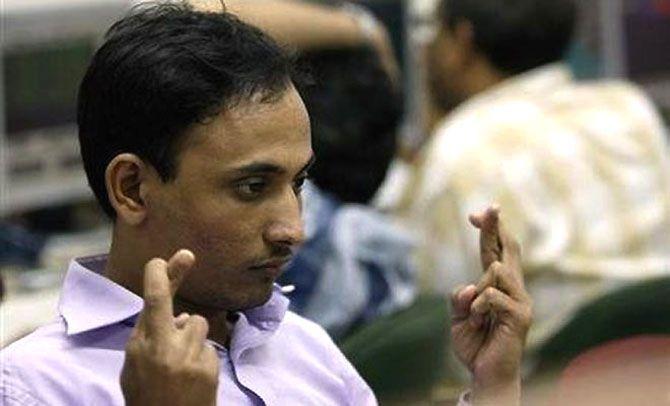 | « Back to article | Print this article |
Stocks that could be the next big hit
The strong rally in Indian markets in recent months has been fuelled by inflows from foreign institutional investors (FIIs), who have pumped in $12 billion so far this year.
Experts say with FII holdings in most good large-caps close to peak levels (of the regulatory limit), incremental FII flows will now target quality mid-cap companies, with good earnings visibility.
Andrew Holland, chief executive of Ambit Investment Advisors, says, “As India is a domestic consumption-driven story with good fundamentals, we believe FII flows will definitely move to mid-caps and the next rung of stocks through the next few years. The shift, however, will not be broad-based.”
Please click NEXT to read more…
Stocks that could be the next big hit
Ambit is optimistic about T&D, MOIL, ABB, Siemens and Thermax. Pundits also favour select names in the insurance, metals and capital goods.
“We believe stocks such as Max India, JSW Steel, Voltas, Sesa-Sterlite, Federal Bank and Exide are currently under-owned by FIIs and have high earnings growth visibility through the next two years,” says Premal Madhavji, head (equities), Espirito Santo Securities.
For this article, companies under-owned by FIIs and expected to post earnings growth of more than 20 per cent in FY15 and FY16 were considered.
Stocks with FII stake of 15-41.3 per cent (as of June 30) were considered, as experts say usually, very low FII holding is due to reasons such as continued weakness in financial performance, weak outlook or low trading volumes.
Please click NEXT to read more…
Stocks that could be the next big hit
Ramco Cement
In the past few years, southern India has seen subdued cement demand. Per-bag realisations had slumped to sub-Rs 200 levels, though it saw a rebound.
After the bifurcation of Andhra Pradesh, optimism on revival of demand from the housing and infrastructure sectors has risen.
Therefore, though companies such as Ramco Cement might have seen a fall in earnings through the past four years, analysts estimate better growth in the future. Ramco Cement not only has capacities in Andhra Pradesh, but also in Tamil Nadu and Karnataka.
Please click NEXT to read more…
Stocks that could be the next big hit
Cummins India
Given the slowdown in key markets (power generation, industrial and auto), the company’s revenue has been declining through the past few quarters, with FY14 sales at 13 per cent.
The company has been focusing on cost savings and investing in growth levers such as low and medium horse power gensets and the reconditioning business.
Analysts expect the contribution from these segments to overall revenue to double from the current 11 per cent by FY16.
Among key areas will be the low horse power business (domestic and exports), in which revenue is expected to improve from Rs 400 crore to about Rs 1,500 crore through three-five years.
Please click NEXT to read more…
Stocks that could be the next big hit
Coromandel International
The urea and complex fertiliser major, with exposure to crop protection solutions, has seen a fall in earnings growth during FY10-14. However, it is likely to perform better.
The company’s bottom line was impacted due to higher interest outgo, which resulted from increased debt. However, its debt has fallen from Rs 3,000 crore in FY13-end to about Rs 1,800 crore in the quarter ended June this year. The key trigger will be the new urea policy.
Please click NEXT to read more…
Stocks that could be the next big hit
Thermax
The company has witnessed slow growth through the past few years, owing to slowing industrial activity in India. But things could change for the better, as the economy picks up.
After two years of sluggishness, Thermax’s order book improved in FY14, led by the brown-field expansions of clients. With India Inc likely to undertake green-field projects now, the order inflow is likely to improve.
To cushion domestic cyclicality in orders, the company also plans to strengthen its South Asia business. It also aims to increase the share of international revenue to the overall figure from the current 26 per cent to 40 per cent.
Please click NEXT to read more…
Stocks that could be the next big hit
HPCL
The downstream distribution company is likely to be the largest beneficiary of ongoing price reforms.
Underrecoveries for oil and gas distribution companies, which stood Rs 1,40,000 crore in FY14, are estimated to fall to Rs 94,200 crore in FY15 and Rs 72,000 crore in FY16.
 While downstream companies are compensated adequately so that they don’t end a year in the red, delayed government compensation leads to rising working capital requirements.
While downstream companies are compensated adequately so that they don’t end a year in the red, delayed government compensation leads to rising working capital requirements.
With underrecoveries set to fall, expect interest costs to decline. HPCL’s interest costs will fall further with the completion of the Mumbai and Vizag refinery upgrades.







